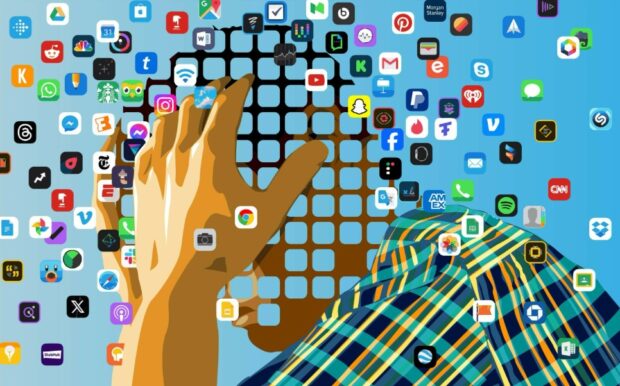Are you checking your phone right now while reading this article? Digital connectivity has fundamentally altered how we work, socialise, and rest. Frequent phone checking, work emails extending beyond office hours, and social media create perpetual comparison cycles. This constant stimulation triggers specific neurological responses that directly impact mood regulation, sleep quality, and stress hormone production.
If you’ve been feeling persistently low or struggling with burnout from being constantly connected, it might be worth consulting a psychiatrists Singapore who can help assess and manage depression related to digital overload.
The relationship between always-on culture and depression involves complex interactions between technology use patterns, brain chemistry, and social behaviour changes. Understanding these mechanisms helps identify when digital habits cross from convenient to harmful.
Digital Overwhelm and Brain Chemistry
Constant notifications trigger dopamine release in the brain’s reward centre, creating a cycle similar to addictive behaviours. Each ping from your phone activates the same neural pathways involved in gambling and substance dependencies. Over time, this continuous stimulation depletes dopamine receptors, requiring more stimulation to achieve the same satisfaction level.
Blue light exposure from screens suppresses melatonin production, disrupting circadian rhythms that regulate mood. Melatonin deficiency extends beyond poor sleep – it affects serotonin synthesis, the neurotransmitter central to mood regulation. Screen exposure within two hours of bedtime can delay melatonin release.
The prefrontal cortex, responsible for decision-making and emotional regulation, becomes fatigued from processing endless information streams. This cognitive exhaustion manifests as difficulty concentrating, increased irritability, and reduced ability to manage emotional responses. Brain imaging studies reveal decreased grey matter density in heavy technology users, particularly in areas controlling focus and emotional processing.
Stress hormones like cortisol remain elevated when we maintain constant availability. Morning email checks before getting out of bed spike cortisol levels immediately, setting a stress baseline that persists throughout the day. This chronic elevation contributes to inflammation, immune suppression, and mood disorders.

Work-Life Boundaries Dissolving
Remote work technology has eliminated traditional boundaries between professional and personal time. Slack messages at 10 PM, weekend Zoom calls, and the expectation of immediate email responses create a state of perpetual work mode. This boundary dissolution prevents the psychological detachment necessary for mental recovery.
The concept of “micro-stress” describes the cumulative effect of constant small interruptions. Each notification, while seemingly minor, activates the stress response system. These micro-stresses accumulate without adequate recovery periods, leading to chronic stress states.
Did You Know?
Your brain requires approximately 23 minutes to fully refocus after each digital interruption, meaning frequent notifications can reduce productive time by several hours daily while increasing mental fatigue.
Asynchronous communication creates “attention residue” – part of your cognitive capacity remains occupied with unfinished digital conversations even when engaging in other activities. This mental background processing increases cognitive load and reduces present-moment awareness, both linked to depressive symptoms.
Performance anxiety intensifies when work visibility increases through digital platforms. Every email becomes a permanent record, every message potentially screenshot, creating pressure for constant professional perfection. This visibility stress particularly affects younger workers adapting to digital-first workplaces.
Social Media’s Psychological Impact
Social comparison theory explains how viewing curated online lives triggers inadequacy feelings. Instagram feeds showcase highlight reels while viewers compare their complete reality, including struggles and mundane moments. This comparison gap widens with increased platform use, correlating directly with self-esteem decline.
“Doomscrolling” – compulsively consuming negative news – activates the amygdala’s threat detection system repeatedly. This chronic activation maintains the body in fight-or-flight mode, depleting resources needed for emotional regulation. News algorithms prioritise engagement over accuracy, often amplifying distressing content that keeps users scrolling.
The “online disinhibition effect” leads to more aggressive interactions than face-to-face communication. Experiencing or witnessing online hostility increases psychological distress, with effects persisting beyond the digital interaction. Comment sections and social media arguments create toxic stress that traditional social interactions rarely produced.

Note
Fear of Missing Out (FOMO) activates the same brain regions as physical pain, explaining why social media abstinence can feel genuinely uncomfortable despite its mental health benefits.
Validation-seeking behaviour through likes and comments creates dopamine-driven feedback loops. The unpredictable nature of social media engagement mimics variable ratio reinforcement schedules – the most addictive reward pattern identified in behavioural psychology. This unpredictability keeps users checking repeatedly, hoping for positive feedback.
Sleep Disruption Mechanisms
Screen use delays sleep onset through multiple pathways beyond blue light exposure. Mental stimulation from content consumption maintains alertness when the brain should transition to rest mode. Emotional activation from social media or work communications prevents the nervous system from downshifting into sleep-preparatory states.
REM sleep, important for emotional processing and mood regulation, decreases with pre-sleep screen exposure. This REM reduction impairs the brain’s ability to process daily emotional experiences, leading to accumulated emotional burden. Dreams during REM sleep serve as emotional regulation mechanisms that screens directly interfere with.
The “sleep procrastination” phenomenon describes delaying bedtime to reclaim personal time lost to work demands. This revenge bedtime procrastination creates a vicious cycle – insufficient sleep increases depression vulnerability, while depression symptoms make sleep initiation more difficult.
Bedroom device presence alone, even when unused, reduces sleep quality. The mere possibility of notifications creates anticipatory anxiety that prevents deep sleep stages. Partners’ device use also impacts sleep through light exposure and disruption, creating household-wide sleep degradation.
Building Digital Boundaries
Establishing “notification windows” limits interruption to specific daily periods. Morning windows might run 9-11 AM, afternoon windows 2-4 PM, with all notifications disabled outside these times. This predictable structure allows focused work and genuine rest periods while maintaining reasonable availability.

Quick Tip
Create a charging station outside your bedroom and purchase a traditional alarm clock – this single change can improve sleep quality.
Physical boundaries reinforce mental boundaries. Designating specific spaces for work devices prevents association of relaxation areas with work stress. Kitchen tables become work zones, couches remain work-free sanctuaries. This spatial separation helps the brain transition between work and rest modes.
“Batch processing” consolidates digital tasks into dedicated time blocks. Email responses happen twice daily rather than continuously. Social media checks occur during predetermined breaks rather than impulsively. This approach reduces task-switching fatigue while maintaining productivity.
Technology sabbaths provide complete digital detox periods. Starting with two-hour blocks and extending gradually, these breaks allow nervous system recovery. Activities during sabbaths should engage different brain regions – physical exercise, creative pursuits, or nature exposure.
What Our Psychiatrist Says
Structured digital boundaries can lead to mood improvements. The initial discomfort of disconnection typically resolves within 3-5 days as the nervous system recalibrates to reduced stimulation.
Digital boundary implementation may benefit from gradual changes rather than dramatic overhauls. Starting with one specific change – perhaps removing phones from bedrooms – before adding additional boundaries can be an approach to consider. This incremental approach may help prevent overwhelming withdrawal-like responses that lead to boundary abandonment.
The fear of missing important communications often prevents boundary setting. Truly urgent matters typically find alternative communication routes, while many “urgent” messages aren’t urgent at all. This realisation can reduce anxiety significantly.

Conclusion
Digital boundaries reduce cortisol levels and improve sleep quality within days. Structured technology use patterns protect dopamine receptors from overstimulation. Creating physical spaces free from work devices allows mental recovery necessary for mood regulation.
If you’re experiencing persistent low mood, anxiety when separated from devices, or sleep disturbances despite improved digital habits, a psychiatrist can evaluate your symptoms and develop targeted treatment strategies.




























